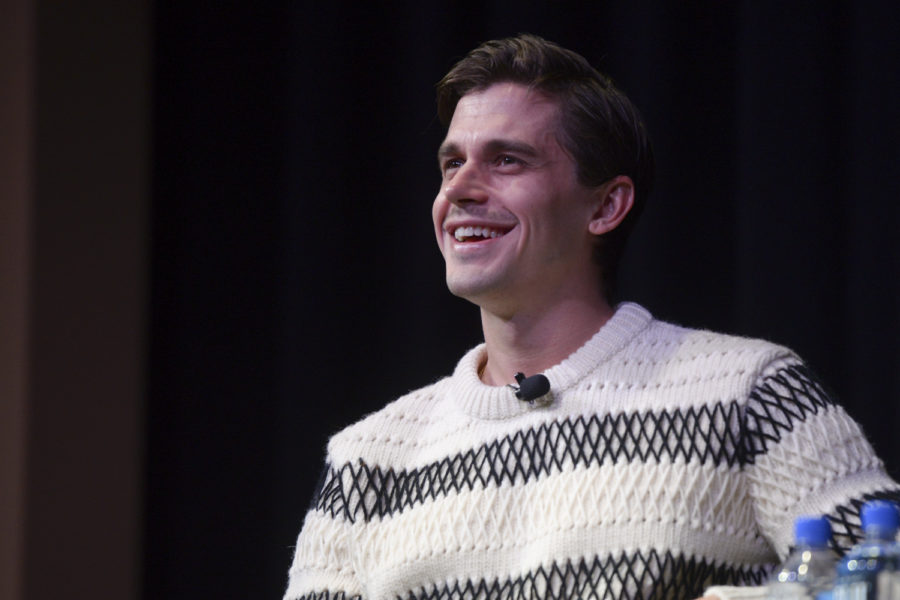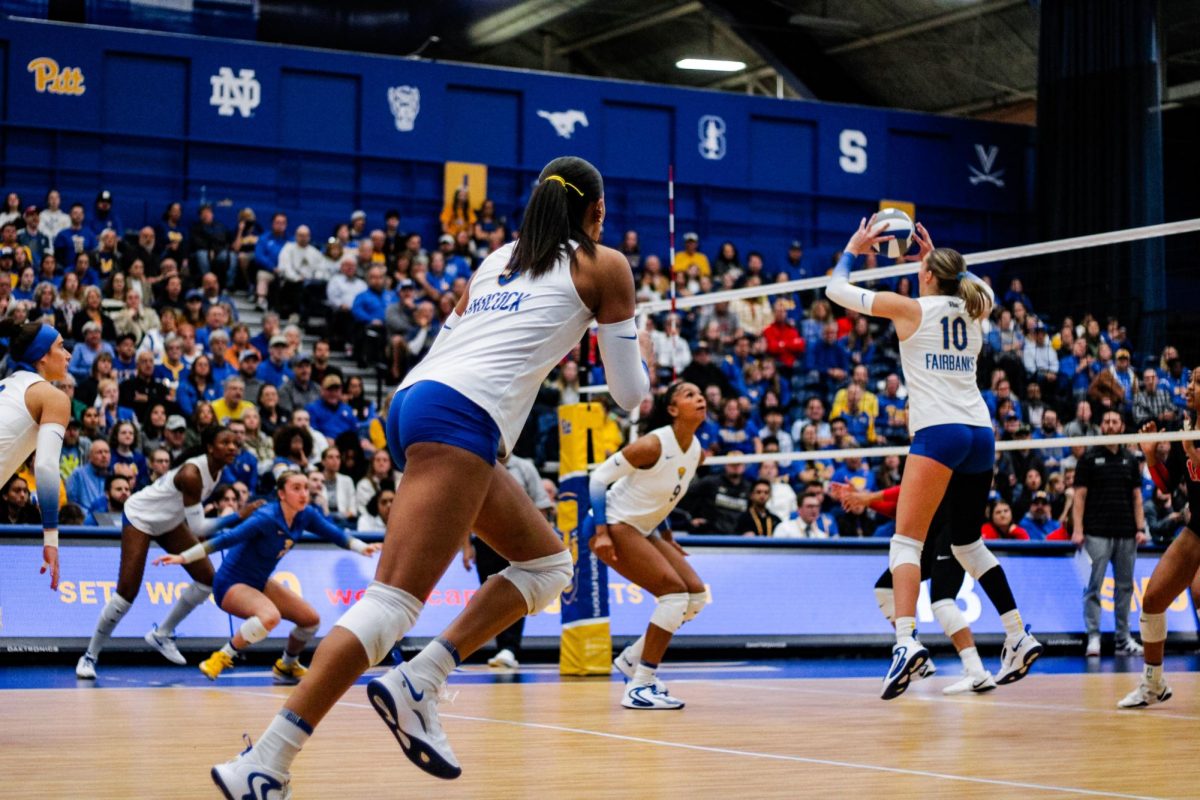New ‘Queer Eye’ season brings joy to fans with diversity and a dog
Sarah Cutshall | Visual Editor
“Queer Eye” food and wine expert Antoni Porowski visited Pitt on Nov. 28, 2018, for a Q&A and cooking demonstration.
March 20, 2019
Before there were Jonathan Van Ness’ iconic “Yas, honey” statements and Antoni Porowski’s on-screen guacamole-making lessons, there was a Bravo TV show of the same concept.
Netflix recently rebooted Bravo’s “Queer Eye for the Straight Guy,” a makeover show focused on gay men bettering the not-so-stylish straight men who were nominated by family or friends. Bravo’s original take ran from 2003 through 2007 and established the now-familiar format that the current series follows.
Season three of the breakout, Emmy award-winning reboot “Queer Eye” hit the streaming service on Friday, to much excitement from the show’s many fans. Instead of helping men become more attractive to women, it is now centered on helping people become better humans. And after two wildly successful seasons that made the stars overnight sensations, Netflix has decided to shake the show up once again, this time with a new location and a new focus.
This season, the Fab Five — food and wine expert Porowski, fashion expert Tan France, culture expert Karamo Brown, interior design expert Bobby Berk and grooming expert Jonathan Van Ness — are traveling through Kansas City, Missouri, instead of Atlanta like the first two seasons. This season also introduced a new cast member — Bruley, the lovable, food-stealing French bulldog.
https://www.instagram.com/p/BvFHkVRHI98/?utm_source=ig_web_copy_link
While the last two seasons tackled heavy topics like internalized homophobia and racial discrimination, this season is a bit lighter but still just as impactful. The Fab Five still have their share of tough conversations — for instance, the first episode, which features a female corrections officer who loves to hunt, offers a brief but compelling chat about her views on gun control.
This season is a huge tearjerker, more so than previous seasons, mostly because the people the Fab Five chose to receive makeovers truly deserve them. These heroes and heroines are relatable, lovable and have been through some tough situations. From a widowed husband and father of two in the episode “Elrod and Sons” to a hardworking duo of sisters who own a barbecue in “Jones Bar-B-Q,” their stories of resilience and their respective journeys to happiness through their week-long makeovers with the Fab Five exceed the surface-level rags-to-riches trope present in a lot of makeover reality TV. The show preaches messages of strength and growth.
Much of the criticism thrown at “Queer Eye” has been its apparent leaning toward the societal constructions of what is handsome, pretty or presentable, such as clean-shaven faces, tamed locks or a proper button-down shirt with a blazer thrown over it. In some people’s eyes, the epitome of a true Fab Five transformation has always turned out to be a bit too cookie-cutter.
However, season three mixes things up a bit. It shifts from conforming to societal norms of beauty to enhancing the underlying good or positive features that a person already has, something that is always refreshing in a society full of superficial expectations.
Season three also tones down another element present in the previous seasons: an emphasis on the heroes’ romantic status. Sometimes it would lead to great stories — for example, AJ from the season-one episode “To Gay or Not Too Gay” got married last year — but other times it would come off as an easy way to get a happy ending out of the episode. In this season, many of the heroes are already in relationships, and those who aren’t are just allowed to focus on their personal journeys.
This increased focus on internal matters adds a new level of depth to the already emotional show. Brown — who was often seen having emotional conversations with the show’s subjects as the culture expert who helps the guests find their inner beauty — isn’t the only one getting personal anymore. Each member of the Fab Five adds intimacy and emotion to their efforts. When Van Ness sits his clients down for a shampoo, he spends as much screen time sharing stories about personal loss or advocating for mindfulness as he does on grooming tips.
One of the highlights of the season are when the Fab Five meet Jody in “From Hunter to Huntee.” Jody is a camo-clad prison guard who loves to hunt with her husband. One of her biggest insecurities is that she isn’t “womanly” enough. Jody resists the idea that she should be “traditionally” feminine. Brown soon realizes that the last thing a woman needs is a man lecturing her about what femininity means, so he introduces her to a group of women who talk about what makes them special. This resulted in Jody having more confidence not only in her femininity, but in herself in general.
Another highlight was Jess, the show’s first lesbian makeover subject. She was outed at 16 years old and forced to leave home by her adoptive parents. It’s clear to the audience that she has been through a lot, but she still manages to keep a positive attitude.
As members of the black community and the LGBTQ+ community alike, Brown and Jess connect on a deeper level. Jess confides in Brown that she doesn’t feel black enough and all she wants is to be a strong black woman. He takes her to meet some dancers at a historically African-American ballet school, where they share similar stories about not feeling black enough and not fitting in. Jess learns that it doesn’t matter how she expresses her blackness or queerness, as long as she is herself.
Overall, the new season of Netflix’s hit delves in and fixes some of the problematic aspects of the previous seasons while still maintaining the traditions of the show. While “Queer Eye” can seem formulaic at times, it continues to succeed, not just because of its personable, charming cast, but because it dares to wear its heart on its sleeve with zero apologies. Sometimes, formulas work.



